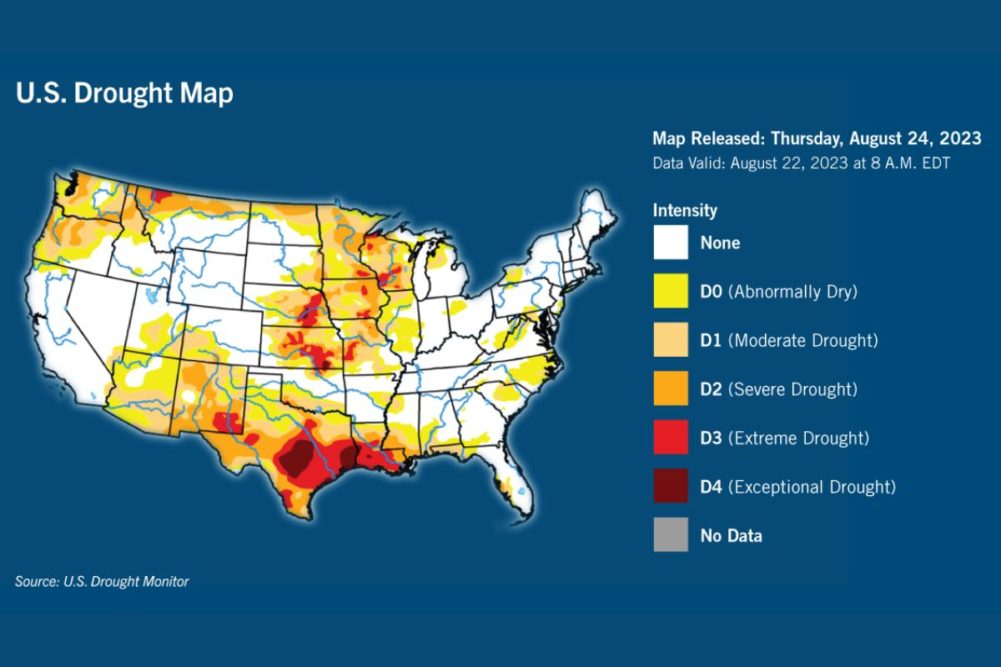DENVER, COLORADO, US — Smaller corn and soybean crops are projected as drought and record heat lower yields, according to scouts who participated in the recent Pro Farmer Crop Tour.
The tour concluded on Aug. 24 amid heat and drought in the western Midwest, with data collected showing smaller harvests. Pro Farmer estimates the national average corn yield at 172 bushels per acre compared to the US Department of Agriculture’s modeled number of 175.1, and 49.7 bushels per acre for soybeans, compared to USDA’s estimate of 50.9.
Most of the soybean crop is in the critical pod-setting phase, which depends on moisture in August. At this stage of the growing season, yield loss due to ongoing heat stress is a much greater risk for soybeans than for corn. Corn also benefits from expanded acreage this year.
According to a new research brief from CoBank’s Knowledge Exchange, soybeans have a much tighter supply situation than corn due to the loss of planted acres. The USDA estimates soybean planted acreage fell 4.6% year-over-year this spring to the lowest level since 2020.
“If hot and dry conditions in the Midwest continue and yield loss for soybeans increases, the US soybean supply will tighten further, resulting in stronger interior cash basis and lower exports,” said Tanner Ehmke, lead grains and oilseeds economist for CoBank.
Ehmke was among the scouts participating in the crop tour who observed soybean pods being aborted in the triple-digit heat. Although pod counts were higher in many states compared to last year and the three-year average, more pods will likely be aborted if hot and dry conditions continue. In addition to drought and heat stress, sudden death syndrome was widely noticed by scouts, as was white mold.
On the plus side, high temperatures late in the growing season are associated with a higher oil content, according to the United States Soybean Quality Annual Report. This coincides with historically strong soybean oil prices relative to soybean meal prices, driven by the expansion in demand for renewable diesel.
“While hot temperatures during the growing season tend to cause lower protein levels in soybeans and lower soybean meal values, the combination of higher oil extraction and higher soybean oil prices will benefit processors,” Ehmke said. “Buy basis for co-ops and processors will be higher in the forthcoming crop year for soybeans, but processor margins are expected to remain strong.”




